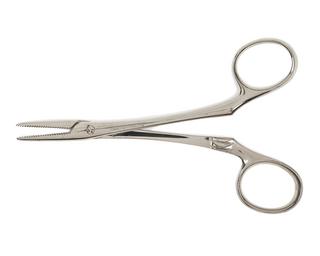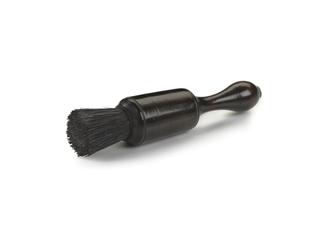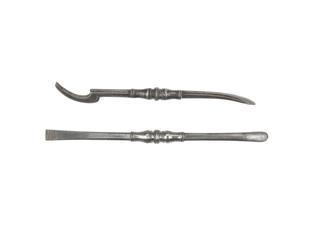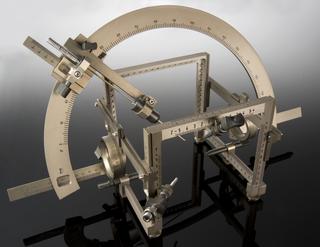
1 Vercise Charger Collar, to hold charger
- Made:
- 2017-2018 in unknown place
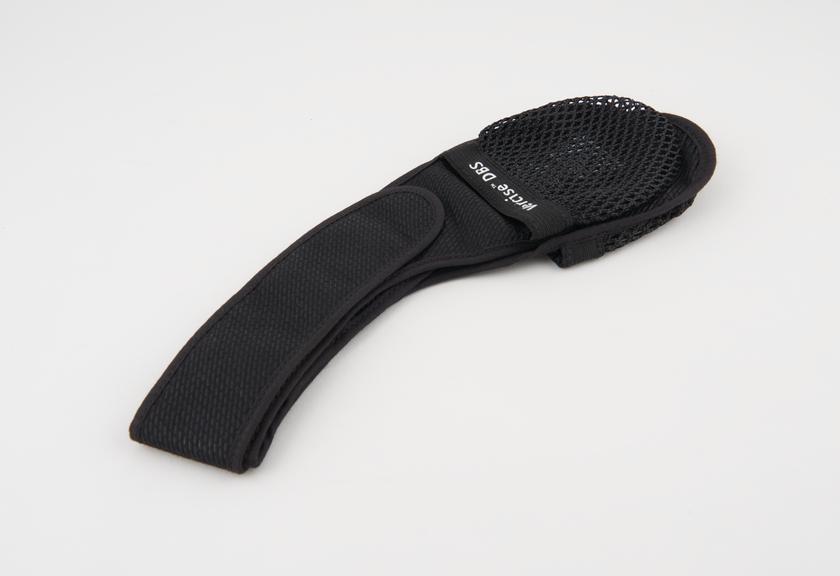
1 Vercise Charger Collar, (Boston Scientific identifier: 5093214-011 medium, used to hold the charger while it is charging the deep brain stimulation system, made by Boston Scientific, 2017 - 2018
Deep brain stimulation (DBS) is the most used surgery to help with the movement symptoms of Parkinson’s. Parkinson’s is a long-term neurological condition which has over 40 symptoms including stiffness, tremor, and slowness of movement. It covers a range of conditions and affects everyone differently.
A device, known as an implantable pulse generator, is placed under the skin of a person’s chest by a surgeon during an operation. Connected to this pacemaker-shaped device are long fine wires which have stimulating electrodes at the end. These are applied to different parts of the person’s brain depending on their symptoms and is adjusted for their own needs. Charging the implantable generator depends on how much power is required, how often and how long some can recharge their device and how it fits into their lifestyle. A remote control provides an easy to read battery meter.
Worn around the neck, this collar has two pockets. One pocket is used for the charger. The other is for a counterweight to keep the collar in place. The charger is placed directly over the device in a person’s chest.
First launched in 2012 by Boston Scientific, the Vercise was at the time one of the smallest devices available and had one of the longest battery lives at 25 years.
Details
- Category:
- Surgery
- Object Number:
- 2019-453
- Materials:
- Cloth and Nylon Mesh
- Measurements:
-
overall: 10 mm x 500 mm x 15 mm,
- type:
- nerve stimulation


